Don McCullin on finding salvation in the countryside
A deeply personal survey of landscape photographs at Hauser & Wirth reveals the photographer’s long relationship with his home in Somerset and the fragility of our natural environment
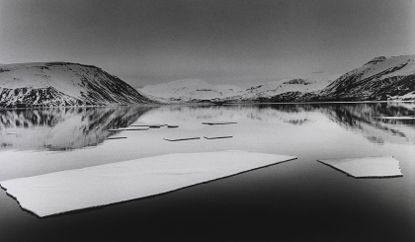
‘I feel like [the gallery] only gave me this show because they thought I was about to die,’ quips Sir Don McCullin ahead of the opening of his new exhibition at Hauser & Wirth Somerset. After six decades of covering conflict, the 84-year-old British photographer words still pierce with the same steely earnestness as his images. This deeply personal survey spans his extensive travels across the globe, from painterly compositions of Somerset’s ‘metallic dark skies’ to the fragile Arctic landscape, colossal ruins in North Africa, sacred Indian and Indonesian locations, and meditative still lifes. Here, in his own words, McCullin candidly opens up about his enduring connection to the British countryside, losing control and the great challenge of landscape photography…
Somerset calling
I owe something to Somerset because I came here when I was a child, about 80 years ago, as an evacuee during the [Second World War]. I spent a couple of years in Somerset, then went back to London and then I went somewhere else because my mother wanted to get rid of me. But I never forgot Somerset and about 36 years ago I returned. I had just been fired from The Sunday Times and I was in a very strange place, I was very depressed. I was sacked by a man called Andrew Neil [then-editor of The Sunday Times], who I don’t like, you might say.
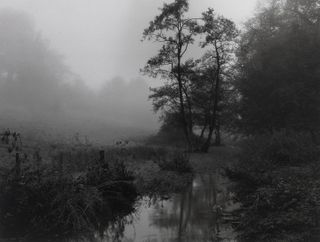
The River Alham that runs through my village in Somerset, mid-1990s, by Don McCullin, gelatin silver print. © Don McCullin. Courtesy of the artist and Hauser & Wirth
Anyway, I found a house down here in Somerset. Because I lived on the hill outside of town, all you could see were the skies, but they were coming from the west where all our weather fronts are from. I [once] saw a collection of paintings by Constable in a private collection in Canada – he did a series of skies on small canvases. So the first thing I do when I wake up in the morning is to look at the sky and think [to myself] if there is a possibility that I can make a landscape picture today. And of course, some days there are, and some days there are not.
A shot in the dark
I don’t work in the summer, I only take pictures in the winter because the sky is much more expressive. I embarked on this landscape career in between doing the other weird things I do in photography. And I do this voluntarily – no one asks me to do it, no one pays me to do it. It’s me that makes myself do it. I started doing landscapes around 1990, and after all these years I’ve managed to put this collection together. I’ve printed every one of these pictures, so there’s a lot of me in these pictures, a lot of my integrity and a lot of my emotional thoughts. It’s a short history of my life for the last 80 years and it has been a great challenge for me.
I’ve got 60,000 negatives, so in the past I’ve always jumped on the ones I thought were the best, and I pushed a whole swathe of them aside. Now I look at them and think that time helps the negative. You can look at a picture that was take in the 1960s and it appears as if it was taken 100 years ago. Time actually enriches these pictures and makes them look very historical.
Sight of the times
I’m just out of control, but it’s not negative out of control, it’s very positive. I have to be very careful I don’t become very offensive about it because people say, ‘What is he trying to do here? Is he trying to frighten us? Is he trying to please us?’ It’s both, really. I used to travel the world working for The Sunday Times, mostly to wars and revolutions. After I came home, I used to abandon my young family – which was very wrong of me – because I wanted to keep going. I was suddenly like a mad dog out of control.
RELATED STORY
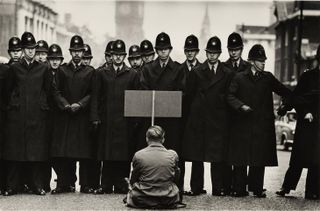
‘The stillness of silence and sometimes my loneliness provoke my imagination, but, like the surrounding land, I am fighting to release the past in me’
I thought I have to do some English landscapes based on [photojournalist] Bill Brandt, a German emigré who came to England in 1933. He was quite wealthy so he would photograph things like maids in posh houses wearing pinnies. But then he would go to the North of England and photograph miners being scrubbed in aluminium bathtubs – I was a fan of his and started following in his footsteps. Thank God I did, because Northern England was a honeypot, it was full of riches. Still, I was indulging myself – in my conscious – on the back of other people’s misfortunes because I was photographing the underprivileged. Mind you, I came from an underprivileged background myself so I thought I knew and understood what I was doing.
The politics of nature
My work is, in a way, environmental, and it’s the same with the landscape [in Somerset]. Our biggest threat around here is that it’s desirable. So-called developers – who aren’t actually developers but are backward-thinking – want to build here and in the end they’ll ruin what we’ve all came to love. But people must have houses. There’s no doubt that my photography has got a political twinge to it, but I’m not clever enough to frame it with voice and mind – I do it better through pictures. But everything we love is under threat, really, the whole planet.
Wallpaper* Newsletter
Receive our daily digest of inspiration, escapism and design stories from around the world direct to your inbox
The landscapes are [political] because of the green belt. There are more than 60 million people living in this country now – where can they go? We can’t imprison them all in cities. Eventually we’re going to have to break out and take some of that land. The green belt was meant as a conservation area for our future generations but we are going to have to bite into it. But I’ll be dead by then, so it won’t bother me. Every time I leave London, I keep seeing another deadly threat: they’re called industrial parks, and they’ve got nothing to do with parkland. It’s a poncey name that’s trying to avoid the fact that it’s another blot on the landscape.
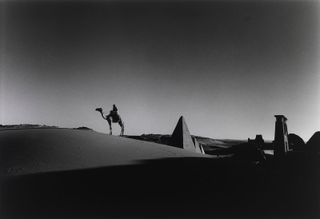
Meroë, the east bank of the Nile, Sudan, 2012, by Don McCullin, gelatin silver print. © Don McCullin. Courtesy of the artist and Hauser & Wirth

Looking forward to the valley of the tombs which Isis have destroyed, 2016, by Don McCullin, gelatin silver print. © Don McCullin. Courtesy of the artist and Hauser & Wirth
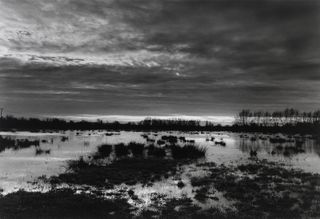
The Somerset levels at dusk, 1998, by Don McCullin, gelatin silver print. © Don McCullin. Courtesy of the artist and Hauser & Wirth

Liverpool, Slum clearance, 1970s, by Don McCullin, gelatin silver print. © Don McCullin. Courtesy of the artist and Hauser & Wirth
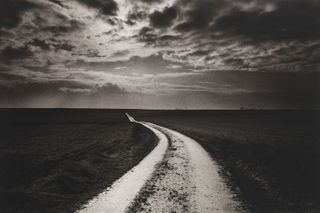
The Road to the Somme, France, 1999, by Don McCullin, gelatin silver print. © Don McCullin. Courtesy of the artist and Hauser & Wirth

Batcombe Vale, 1992-93, by Don McCullin, gelatin silver print. © Don McCullin. Courtesy of the artist and Hauser & Wirth

Installation view of ‘Don McCullin. The Stillness of Life’ at Hauser & Wirth Somerset. © Don McCullin. Courtesy of the artist and Hauser & Wirth
INFORMATION
‘Don McCullin. The Stillness of Life’, 24 January – 4 May, Hauser & Wirth Somerset. hauserwirth.com
ADDRESS
Hauser & Wirth Somerset
Durslade Farm
Dropping Lane
Bruton
Somerset BA10 0NL
-
 The moments fashion met art at the 60th Venice Biennale
The moments fashion met art at the 60th Venice BiennaleThe best fashion moments at the 2024 Venice Biennale, with happenings from Dior, Golden Goose, Balenciaga, Burberry and more
By Jack Moss Published
-
 Crispin at Studio Voltaire, in Clapham, is a feast for all the senses
Crispin at Studio Voltaire, in Clapham, is a feast for all the sensesNew restaurant Crispin at Studio Voltaire is the latest opening from the brains behind Bistro Freddie and Bar Crispin, with interiors by Jermaine Gallagher
By Billie Brand Published
-
 Vivienne Westwood’s personal wardrobe goes up for sale in landmark Christie’s auction
Vivienne Westwood’s personal wardrobe goes up for sale in landmark Christie’s auctionThe proceeds of ’Vivienne Westwood: The Personal Collection’, running this June, will go to the charitable causes she championed during her lifetime
By Jack Moss Published
-
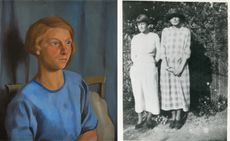 Dorothy Hepworth and Patricia Preece: Bloomsbury’s untold story
Dorothy Hepworth and Patricia Preece: Bloomsbury’s untold story‘Dorothy Hepworth and Patricia Preece: An Untold Story’ is a new exhibition at Charleston in Lewes, UK, that charts the duo's creative legacy
By Katie Tobin Published
-
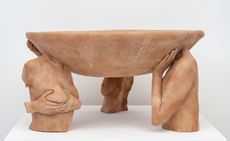 Who is the future of British art? Hauser & Wirth Somerset finds out
Who is the future of British art? Hauser & Wirth Somerset finds out‘Present Tense’ at Hauser & Wirth Somerset showcases some of Britain’s most exciting emerging talents with a group show of 23 artists
By Mary Cleary Published
-
 Sinta Tantra’s sculptures find a historic home at Pitzhanger Manor, UK
Sinta Tantra’s sculptures find a historic home at Pitzhanger Manor, UKSinta Tantra’s ‘The Light Club of Batavia’ exhibition at Pitzhanger Manor unites her large and small-scale works and explores the duality of beauty and colonialism
By Amah-Rose Abrams Published
-
 Jonathan Baldock’s playful works bring joy to Yorkshire Sculpture Park
Jonathan Baldock’s playful works bring joy to Yorkshire Sculpture ParkJonathan Baldock mischievously considers history and myths in ‘Touch Wood’ at Yorkshire Sculpture Park
By Anne Soward Published
-
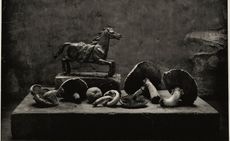 ‘Don McCullin in Rome’: a major retrospective spans peace and pain
‘Don McCullin in Rome’: a major retrospective spans peace and pain‘Don McCullin in Rome’ is showing until 28 January at Palazzo Esposizioni Roma, bringing together the photographer’s most radical experiences
By Hannah Silver Published
-
 Avery Singer considers 9/11 trauma and corporate anonymity at Hauser & Wirth
Avery Singer considers 9/11 trauma and corporate anonymity at Hauser & Wirth‘Avery Singer: Free Fall’ opens at Hauser & Wirth, London, melding a serene office aesthetic with moments of horror
By Emily Steer Published
-
 Frieze London 2023: what to see and do
Frieze London 2023: what to see and doEverything you want to see at Frieze London 2023 and around the city in our frequently updated guide
By Hannah Silver Last updated
-
 Kerry James Marshall donates first portrait, of Skip Gates, to Fitzwilliam Museum, UK
Kerry James Marshall donates first portrait, of Skip Gates, to Fitzwilliam Museum, UKKerry James Marshall's portrait of the literary critic, writer and filmmaker is his first of a real, rather than an imagined, sitter
By Amah-Rose Abrams Published